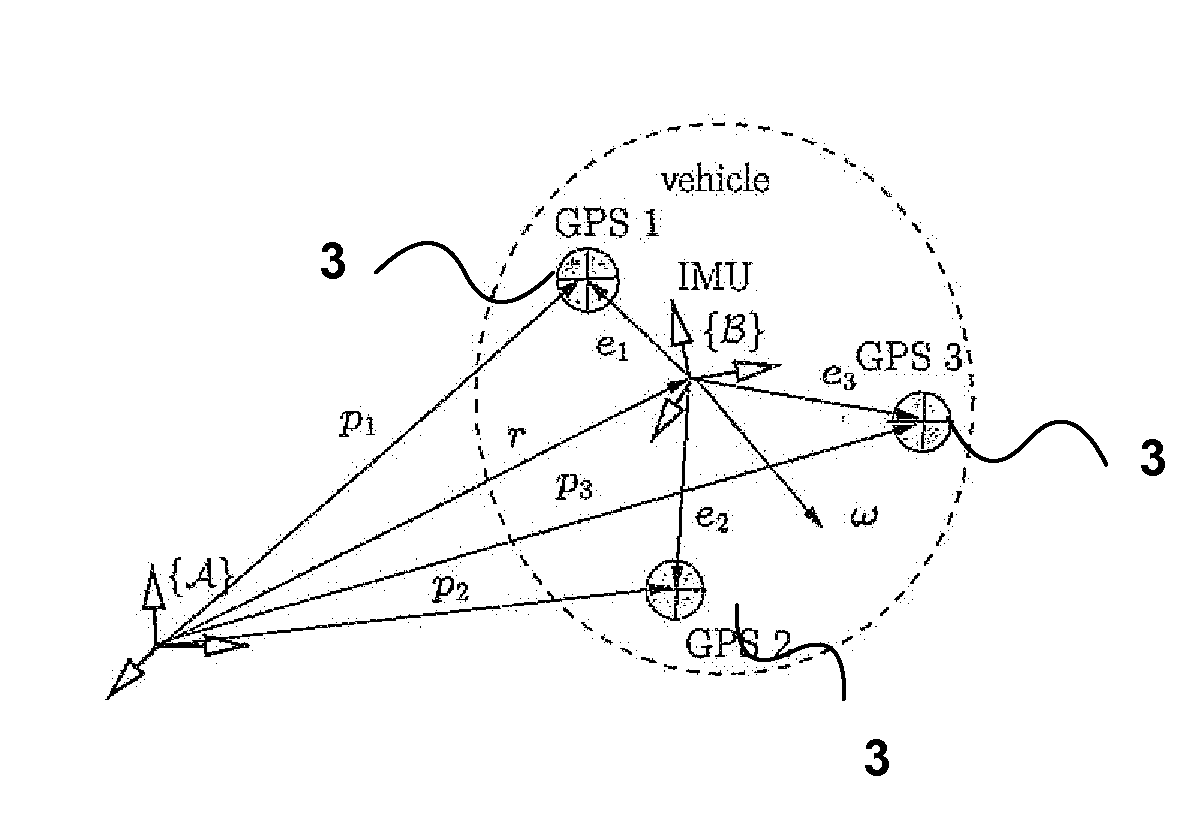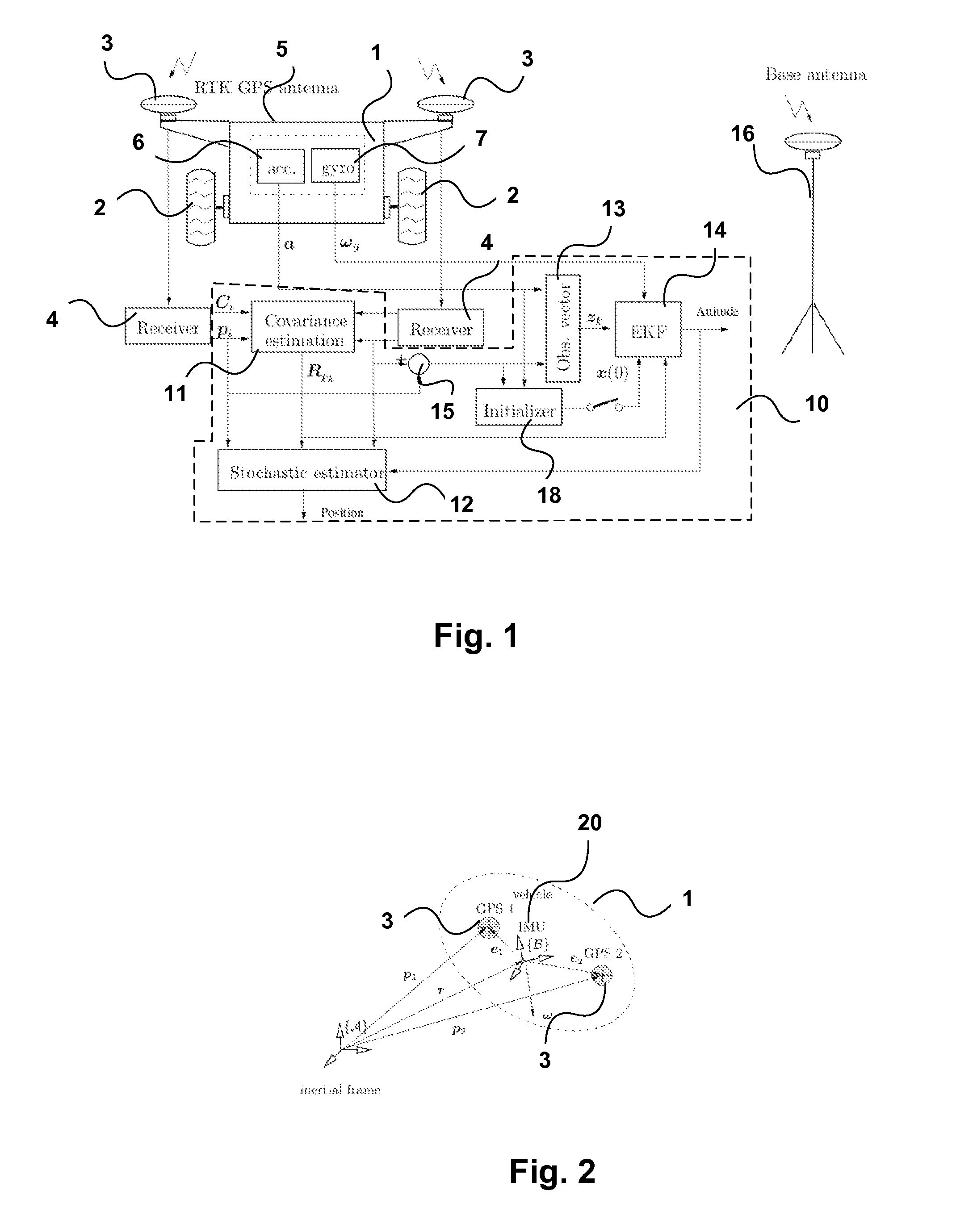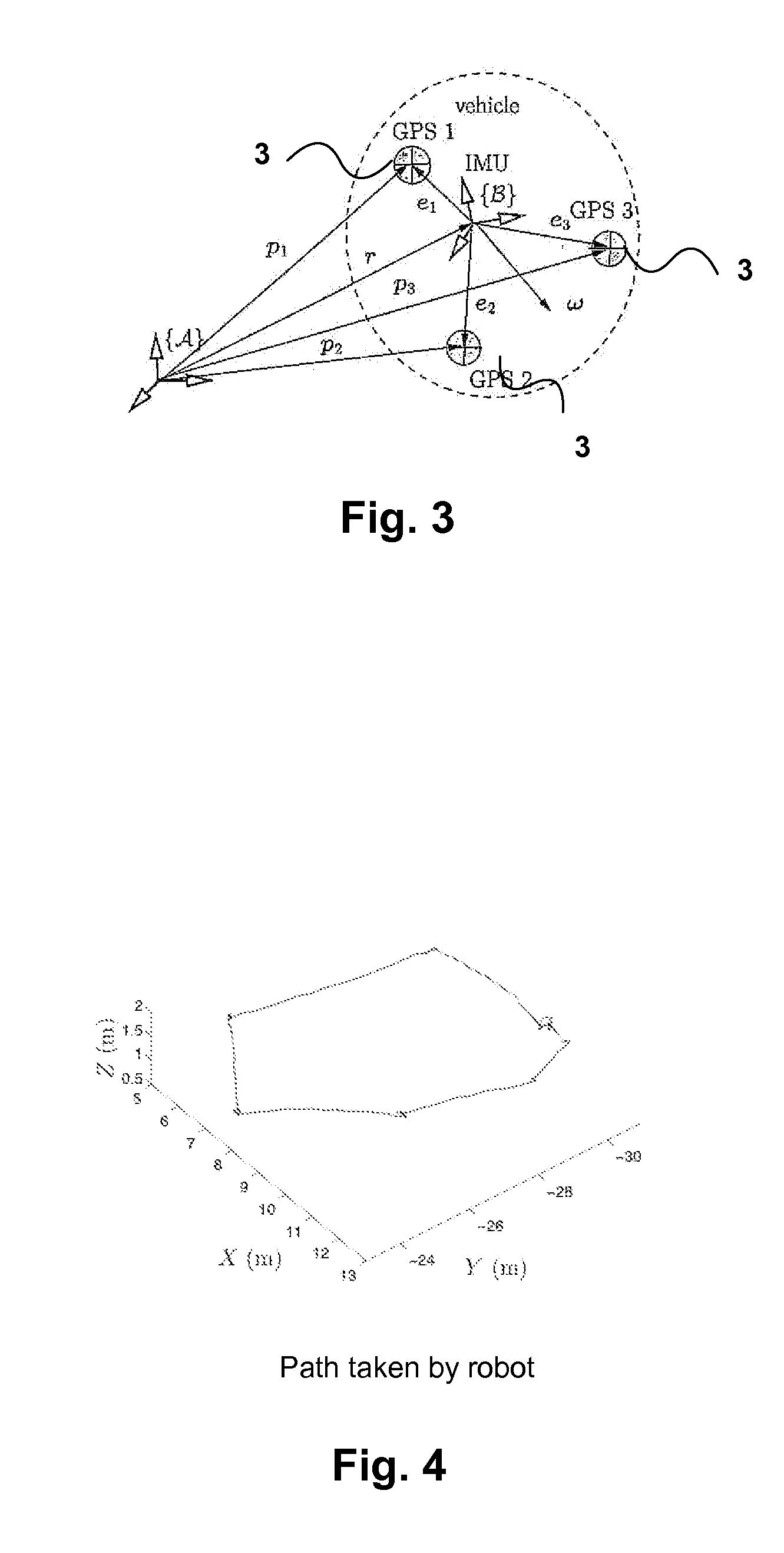Apparatus and methods for driftless attitude determination and reliable localization of vehicles
a technology of attitude determination and autonomous vehicle, applied in the field of autonomous vehicles, can solve the problems of limited application of this technique for localizing outdoor robots, requiring additional information about absolute position and orientation, and quick accumulation of position and attitude errors, so as to enhance the accuracy and robustness of gnss-based localization of vehicles, and enhance positional information.
- Summary
- Abstract
- Description
- Claims
- Application Information
AI Technical Summary
Benefits of technology
Problems solved by technology
Method used
Image
Examples
experimental verification
[0117
[0118]The test vehicle was equipped with three RTK GPS antennas as shown in FIG. 3. Although only two GPSs are required by the adaptive KF, having three GPSs allowed measurement of the vehicle attitude purely from a kinematic relation. Despite its poor accuracy, the three-GPS attitude determination method does not introduce any attitude drift. Therefore, it was possible to investigate whether or not the pose estimation method based on fusing two GPSs and an IMU exhibits any drift.
[0119]Assume that p3 and e3 denote the third GPS measurement and the location of its antenna on the vehicle, respectively. Also, denote Δp′=p1−p3 and Δe′=e1−e3 and
Na=[Δp Δp′ Δp×Δp′]
Nb=[Δe Δe′ Δe×Δe′] (54)
[0120]where identity Na=ANb holds in the absence of GPS measurement noise. Therefore, in a development similar to (40) -(47), one can calculate the rotation matrix from the above matrices.
[0121]A rover equipped with three RTK GPS receivers along with satellite antennas and radio modems (model Promark3...
PUM
 Login to View More
Login to View More Abstract
Description
Claims
Application Information
 Login to View More
Login to View More - R&D
- Intellectual Property
- Life Sciences
- Materials
- Tech Scout
- Unparalleled Data Quality
- Higher Quality Content
- 60% Fewer Hallucinations
Browse by: Latest US Patents, China's latest patents, Technical Efficacy Thesaurus, Application Domain, Technology Topic, Popular Technical Reports.
© 2025 PatSnap. All rights reserved.Legal|Privacy policy|Modern Slavery Act Transparency Statement|Sitemap|About US| Contact US: help@patsnap.com



